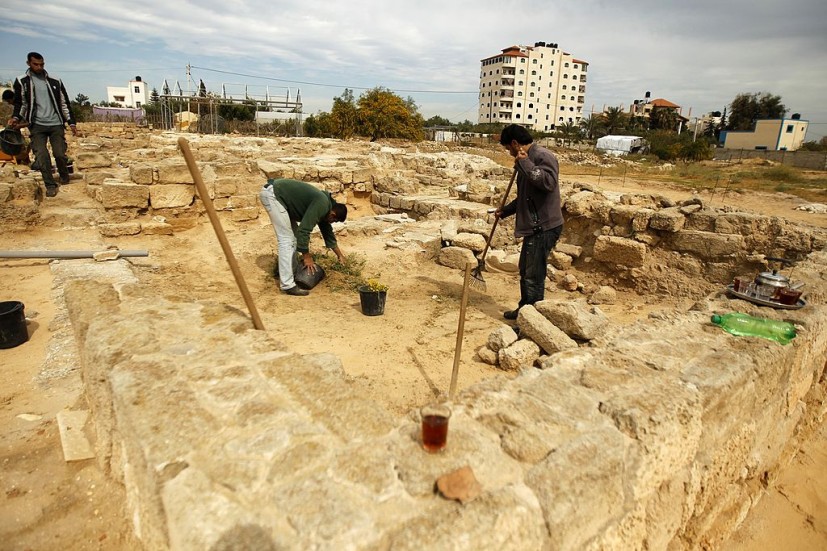UNESCO has granted the Saint Hilarion Monastery of "Tell Umm Amer," located in the Gaza Strip in Palestine, "enhanced protection" following reports that it had received damage in the ensuing Israel-Hamas conflict.
The archaeological site has been part of UNESCO's Cultural and Natural Heritage Protection List starting from 2012 and was originally built within Al Nusairat, a coastal village south of Gaza. It is currently one of the largest and oldest known monasteries unearthed within the Middle East.

Behind UNESCO's Decision
Jehad Yasin, general director of the Palestinian Authority's Ministry of Tourism and Antiquities, told The Art Newspaper that they are not sure if the "monument itself" sustained damages, but they are aware that the roads leading to the monastery and its neighborhood have been "affected" directly.
Yasin also emphasized the importance of protecting the entirety of the location since the majority of the archaeological site has yet to be excavated and, consequently, other features of the monument are currently left unearthed.
Because the location of the site poses logistical challenges when it comes to the holistic assessment of damages, experts from UNESCO are currently relying on "satellite data and information transmitted by third parties" to scope out the extent of the wreckage, a spokesperson for the UN agency said.
"UNESCO is particularly concerned about the situation of the ruins of Saint Hilarion," they added.
Unesco's Committee for the Protection of Cultural Property in the Event of Armed Conflict convened last Thursday, Dec. 14, to formally grant enhanced protection for the Saint Hilarion site during an interim period. The issued immunity is the highest degree of protection against armed attacks as launched in the Second Protocol of the 1954 Hague Convention.
Read Also T : he Metropolitan of Art Agrees to Repatriate Stolen Khmer Artifacts to Cambodia and Thailand
Other Endangered Gaza Archaeological Sites
Yasin hopes that this UNESCO decision will ignite a string of initiatives from other institutions to help in the conservation efforts of more heritage sites in Gaza that are in danger of being damaged or destroyed, saying, "It is not just about the Saint Hilarion, maybe it can open eyes on all the cultural heritage in Gaza."
Last November, the UNOSAT launched a comprehensive damage assessment on the war-torn strip and concluded that over 40,000 buildings have been defaced or were annihilated since the Israel-Hamas conflict started. Many of these structures were ancestral sites linked to numerous ancient civilizations like the Egyptians, the Philistines, and the Romans.
According to Yasin, they are continually keeping tabs on a handful of cultural sites and providing the gathered pieces of information to UNESCO, which in turn, would hopefully forward it to the Israeli government for the eventual protection of the sites.
"We are trying to protect all our cultural heritage and to keep [it] safe because this is not only our cultural heritage, it is [also] humanity's cultural heritage," he added.